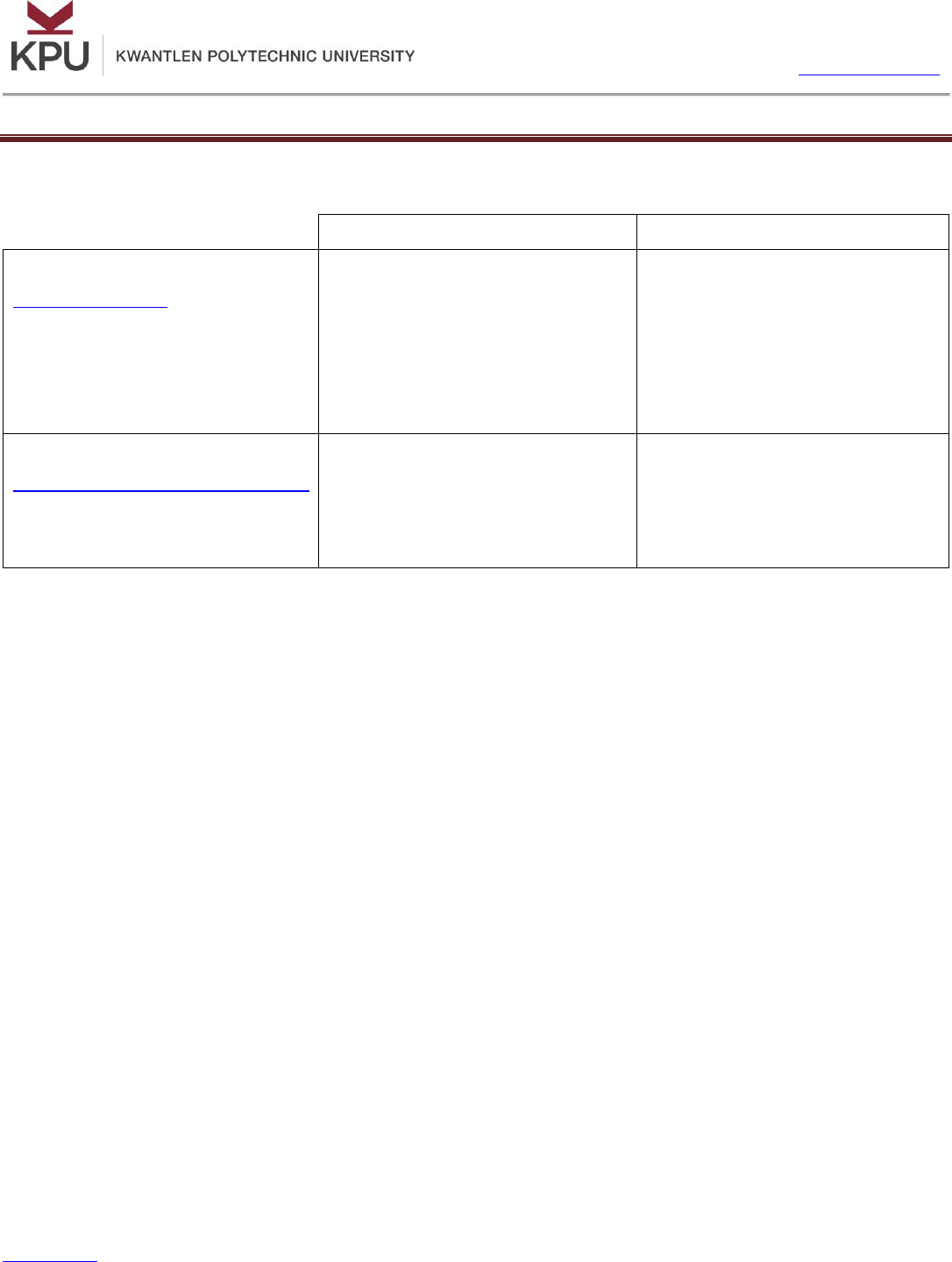
The Learning Centres
KPU Surrey KPU Richmond KPU Langley KPU Tech
kpu.ca/learningcentres
Spaced Repetition: Remembering What You Learn
centre@kpu.ca 1 of 2 Learning Aid
What is spaced repetition?
Spaced repetition is a method of reviewing material at systematic intervals. At the beginning of the
learning process, the intervals are spaced closely together (for example, one hour; four hours; one
day). As the material is reviewed, the intervals become systematically longer (four days; one week;
two weeks). An ideal system of spaced repetition allows you to review the material before it is
forgotten, helping you to retain it in your long term memory.
Spaced repetition is in many ways the opposite of "cramming". Rather than learning information in a
short time period, which can lead to quick forgetting, spaced repetition focuses on long-term retention
of new information. For example, if you learned material from a textbook chapter in the first week of
the semester, you would want to review it on a regular schedule – perhaps the second, fourth, eighth,
and last weeks of the semester in order to retain the information in your long-term memory.
How is spaced repetition effective?
Repeatedly encountering material at a spaced interval is more effective than reviewing the
material multiple times in the same study session.
Spaced repetition reduces the forgetting that occurs when material is not encountered for a
significant time period.
Spaced repetition involves actively recalling learned material, which supports learning. Also, if an
item is forgotten, you are prompted to use a more effective learning strategy to retain the
information for later reviews.
How can I use spaced repetition in my study?
Spaced repetition is especially effective for courses where you are required to memorize a significant
amount of new information – for example, vocabulary for a language course, or definitions for a
psychology or biology course. Flashcards, paper or electronic, can be a particularly useful tool as part
of a spaced repetition system using one of the following methods.
1. The "Box Method": When you create a new flashcard, place it in the first box. At your next review
session, if you correctly recall the information, move the card to the second box, which is reviewed
less frequently. Cards in the second box which are correctly recalled after a longer time period are
moved into a third box, and so forth. If a card in a later box is forgotten, move it back to an earlier box
for more frequent review or relearning.
2. Spaced repetition software: Computer and smartphone applications can be a helpful tool for
developing digital flashcard sets. One advantage is that the software can help to take care of the
spacing interval for each flashcard, presenting you with the items you need to learn and review each
day. There are several spaced repetition programs available: Anki (http://ankisrs.net) and Memorang
(https://www.memorangapp.com) are both good choices. You may find other apps online and can
make your choice depending on your device.
Adapted from: Thalheimer, W. (2006, February). Spacing learning events over time: What the research says. Retrieved
from http://www.phase-6.de/system/galleries/download/lernsoftware/Spacing_Learning_Over_Time__March2009v1_.pdf

The Learning Centres
KPU Surrey KPU Richmond KPU Langley KPU Tech
kpu.ca/learningcentres
Spaced Repetition: Remembering What You Learn
centre@kpu.ca 2 of 2 Learning Aid
Comparison of Two Spaced Repetition Apps
Advantages
Disadvantages
Anki
http://ankisrs.net
Simple to learn and use
Available as a desktop
application, smartphone
app, or online; easy to
synchronize between your
phone and computer
If reviews are not regular,
the amount of cards to be
reviewed can be
overwhelming
The iOS application is not
free (though all other
applications are)
Memorang
https://www.memorangapp.com
Available on a variety of
platforms: online and
smartphone apps
Provides a variety of
quizzing formats and games
Some time investment is
needed to learn the card
creation format that works
best for studying and
quizzing
Steps to get started:
1. Start early in the semester. This will allow you to gain the most benefit from regular spaced
review.
2. Set up an account on Anki, Memorang, or another tool of your choice (this is done on the
particular App’s website).
3. Create one deck for each course or major topic you are studying. Depending on the content you
are studying, you may wish to include the following card types:
a. Word definition: e.g. what is a hormone? A chemical substance that is released by an
endocrine gland and that has effects on other target cells in other organs.
b. Reverse word definition: Presents the definition on the front of the card, requiring you to
identify the key term.
c. Fill in the blanks: e.g. The three major parts of the brain are the ____________, midbrain, and
hindbrain (answer: forebrain)
4. Add images to flashcards where appropriate to help you retain information.
5. Use small periods throughout the day to study and review – for example, time between classes, or
time spent in transit. By using your flashcard program daily, you will review your cards on the
schedule that will lead to the best possible remembering.
Keep up with new definitions and concepts as the semester progresses and you will have a solid set
of study notes for the whole course.
